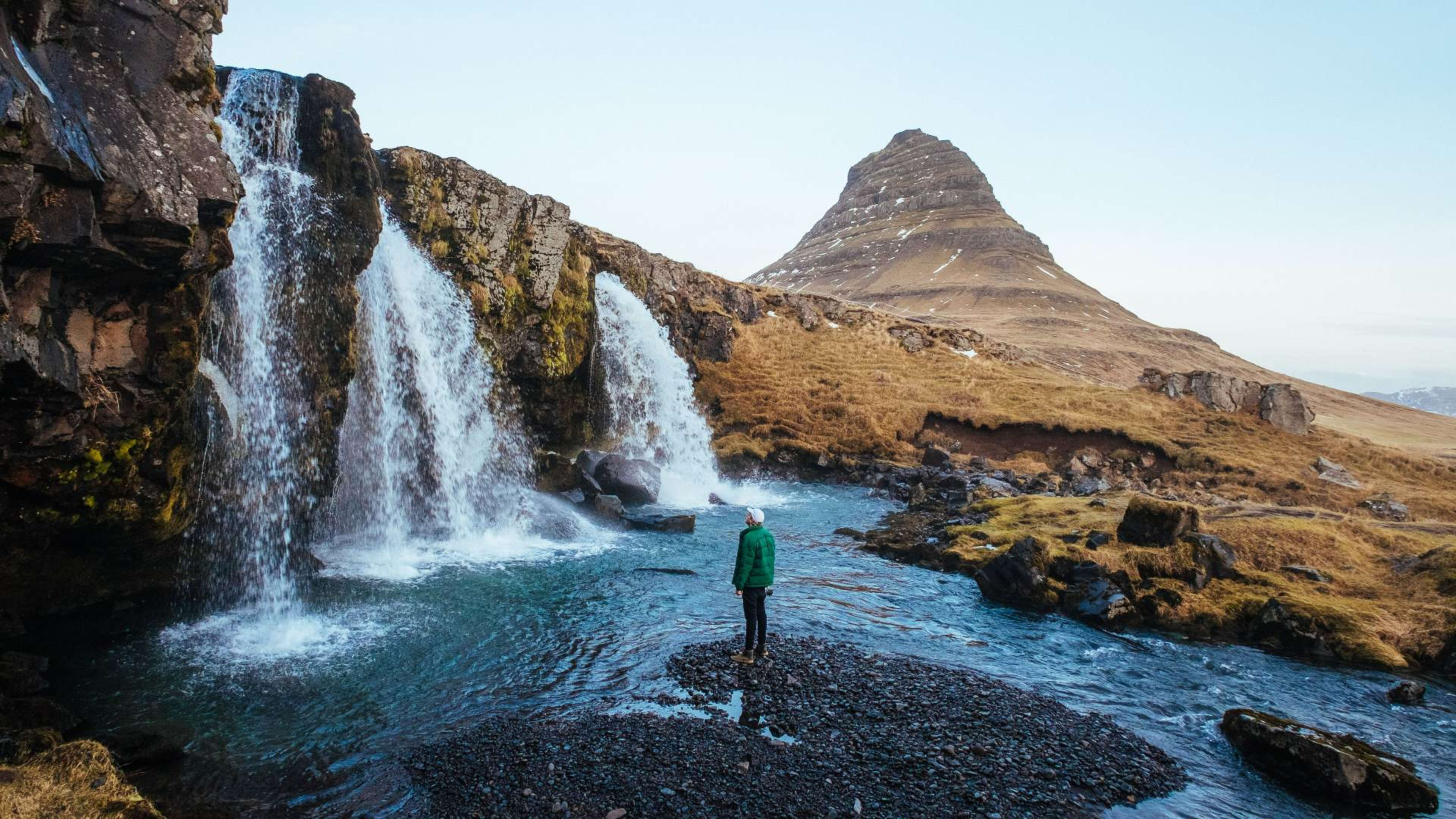Fall in Iceland is a time for traditional festivals, rich autumnal colors, and the first glimpses of the Northern Lights. And with fewer visitors around than at other times of the year, you’ll have more of the top sights to yourself.
In this guide, you’ll learn everything you need to know about visiting Iceland in the fall. Expect practical advice for traveling in autumn, and discover why this could be the best season for your trip.
- Visit the Land of Fire and Ice on an autumn vacation with these Iceland summer and winter tours.
When is fall in Iceland?
Explore Iceland anytime between the end of August and the beginning of November and you’re likely to experience fall conditions. But much like in the rest of the Northern Hemisphere, September and October in Iceland are the two core months of autumn.
That said, Iceland’s seasons can sometimes go off-script. For instance, autumnal weather has been known to arrive as early as August. And occasionally, winter snow might not come until late November.
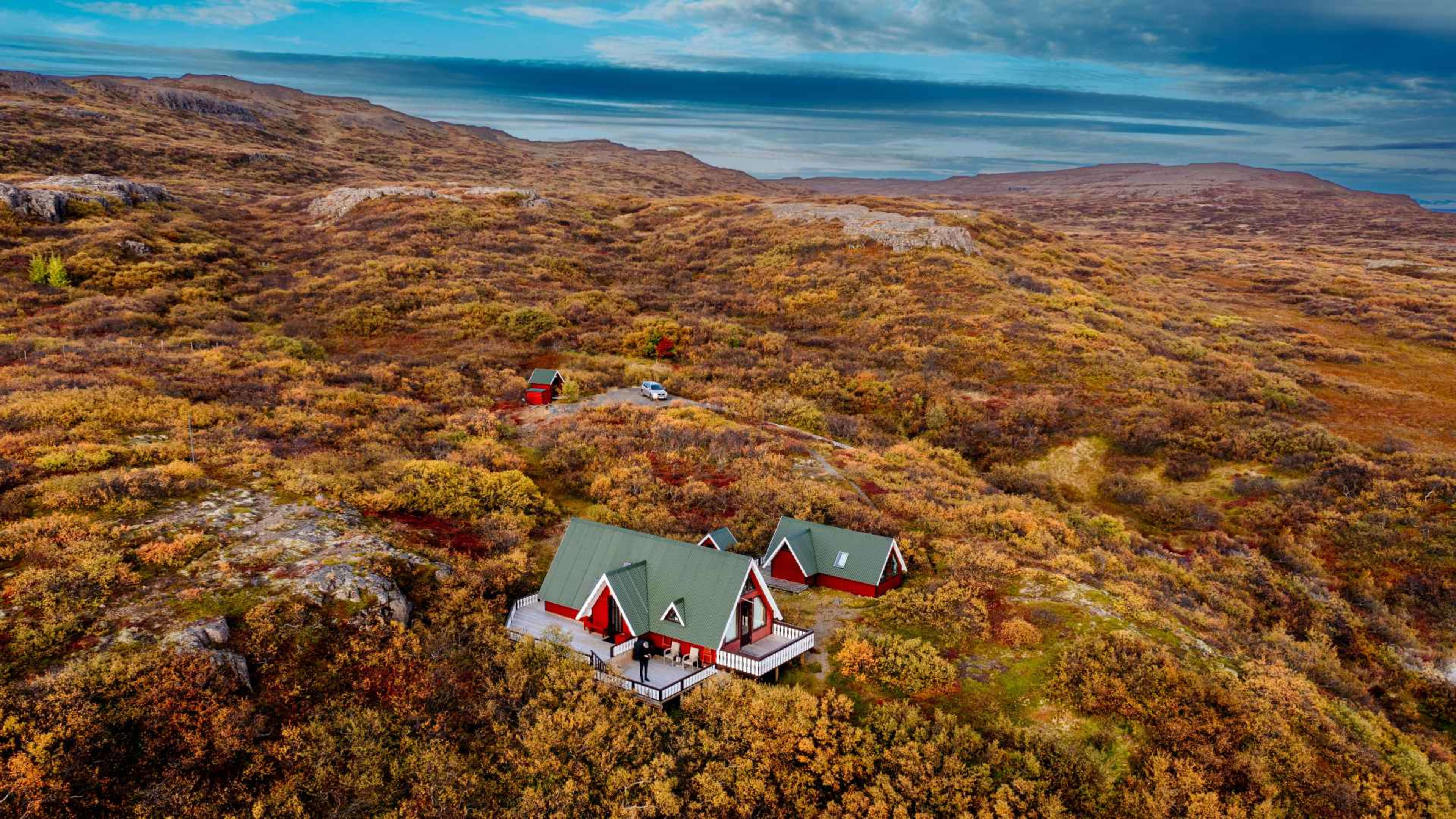
What’s the weather like in the fall?
In autumn, the Icelandic weather is typically milder than in the winter months, but not quite as stable as in summer. This means it’s best to come prepared for variety. For instance, in one day you could experience bright sunshine followed by a sprinkling of snow.
The weather will change throughout the season too. In September, you can expect mild weather, with average temperatures of 6-11°C (43-52°F). And it’ll often stay relatively dry, with about 73.5 cm (2.9 in) of rain falling per month.
By the time November comes around, things could feel different. You’ll experience cooler temperatures, typically between 1-5°C (34-41°F). Plus, rain and snow are more likely.
Don’t get caught out by the changes in daylight hours, either. At the beginning of September, you’ll enjoy over 14 hours of sunlight each day in Reykjavík. But, come mid-November, you’ll have just 6½ hours of daylight. These shorter days will give you more opportunities to spot the Northern Lights!
- Read this travel guide for more information on Iceland’s weather and climate.
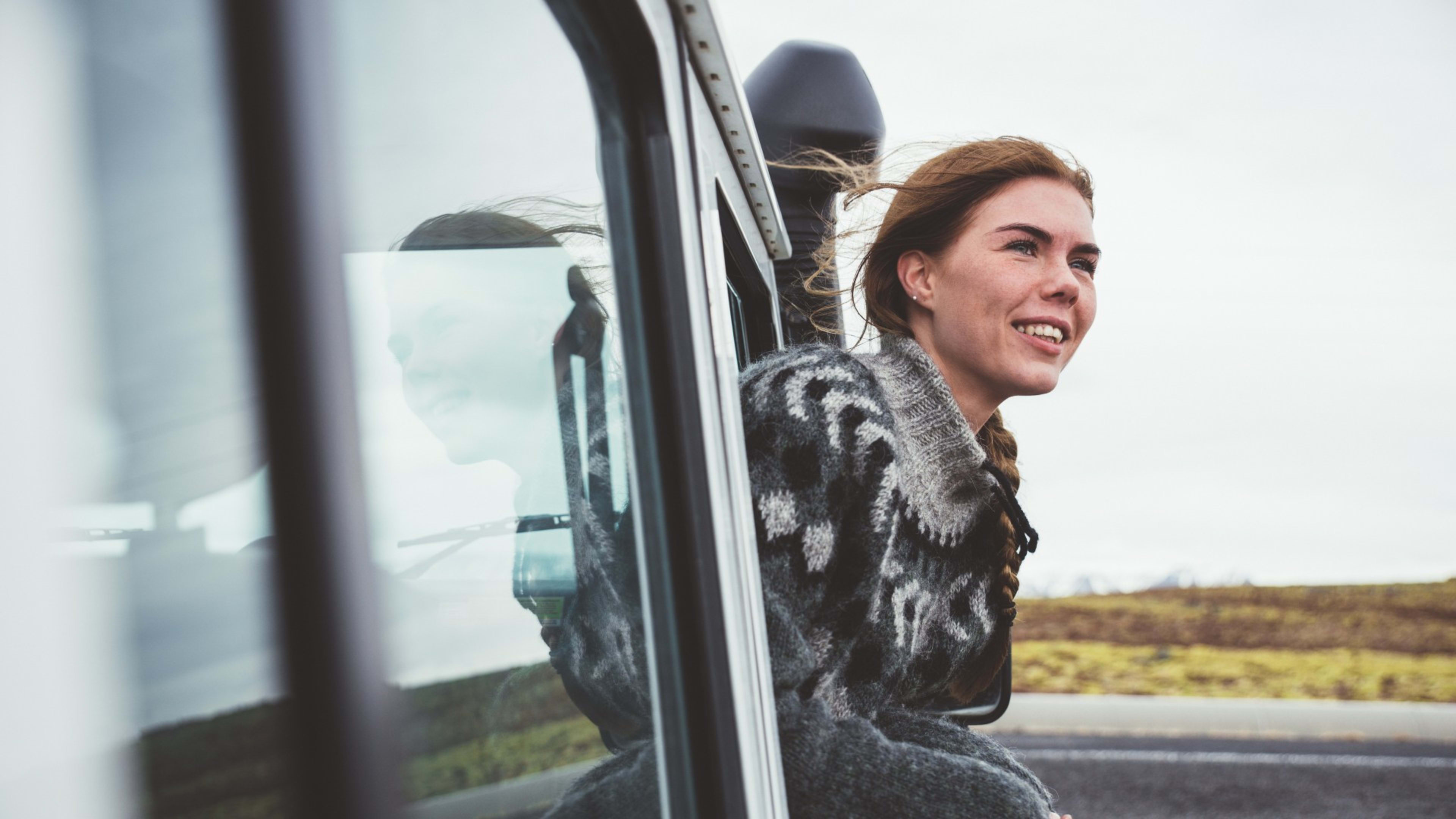
What to pack for Iceland in the fall?
Come prepared for the changeable weather, and there will be nothing to stop you from exploring Iceland’s stunning scenery. But don’t worry if you do forget something – Reykjavík has lots of outdoor and clothing stores for you to choose from.
No matter when you visit Iceland, make sure to pack clothes that’ll keep you warm and dry. This means a waterproof jacket, at least one warm fleece, and sturdy waterproof shoes are a must. We also recommend bringing a cozy hat, scarf and gloves.

When you’re packing for fall in Iceland, think layers. As the weather can be so unpredictable, having layers to take on and off as you need them is the most convenient way to dress. Start with a thermal T-shirt and add a sweater or a jacket when you get cold or if it starts to rain.
What you’ll bring also depends on the activities you’ve got planned. For example, swimwear will be handy for Iceland’s famous thermal spas and hot springs. And a pair of thick socks is a great idea if you’re planning any hikes.
Of course, don’t forget your camera! Autumn looks good on Iceland, so you’ll definitely want to take lots of photos during your trip.
- See this Iceland packing list for helpful tips on what to bring with you.
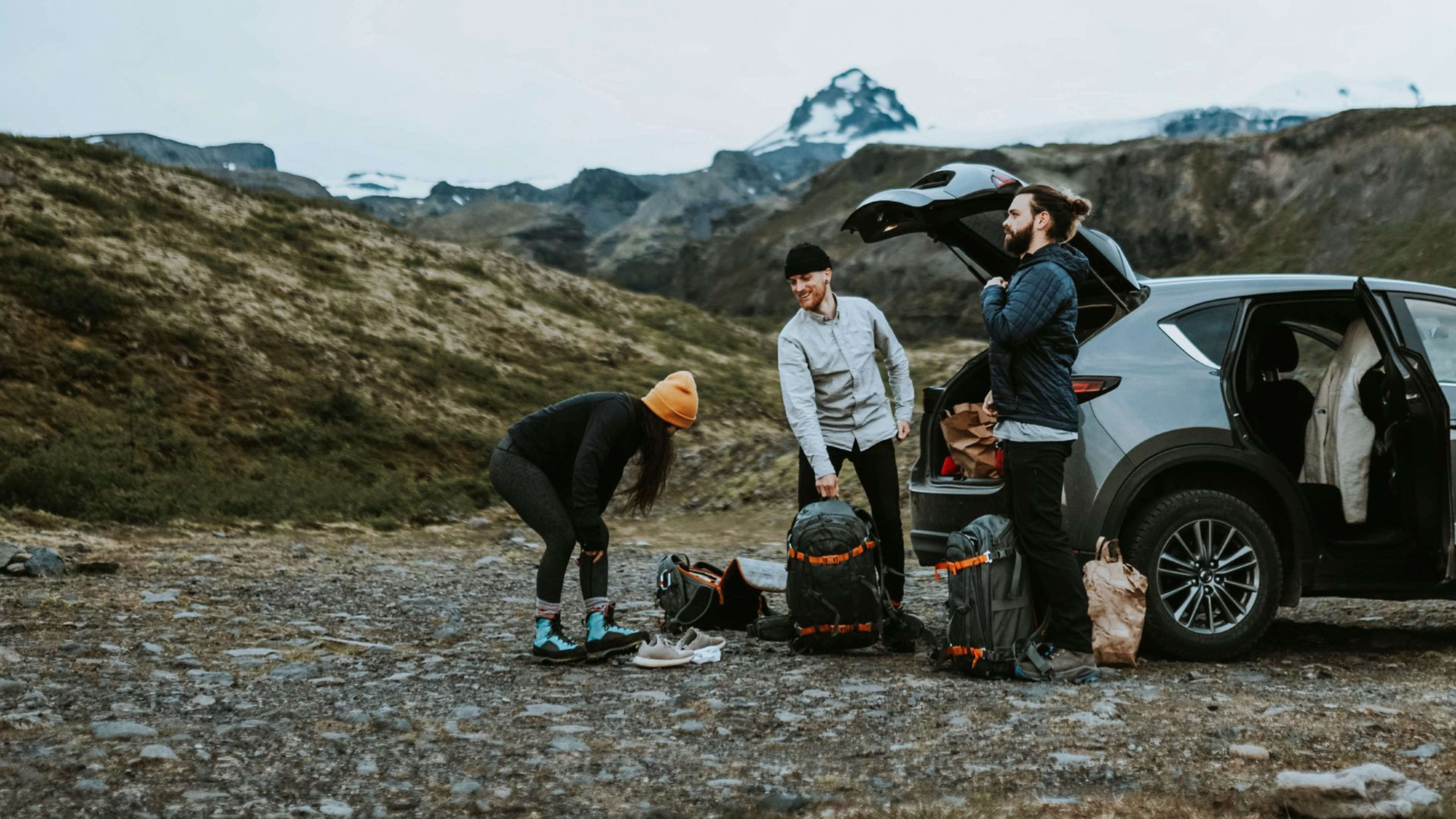
Can you see the Northern Lights in the fall?
While winter is the most popular time to chase the Northern Lights in Iceland, you can witness this captivating display in autumn too.
For you to see the Aurora Borealis, the night sky needs to be dark. In summer, the midnight sun steals the show, making it impossible to see this natural display. But with ever-shorter days and darker nights, you can spot the Northern Lights again from October.
The only difference with Northern Lights-hunting in autumn is that you’ll need to stay out a little later. For instance, you can expect complete darkness before 7:00 p.m. in December. Meanwhile, you’ll have to wait until after 9:00 p.m. in October.
But that’s not too much to ask if you want to glimpse this unforgettable sight. And with milder fall weather, you won’t need to layer up quite as much as in mid-winter.
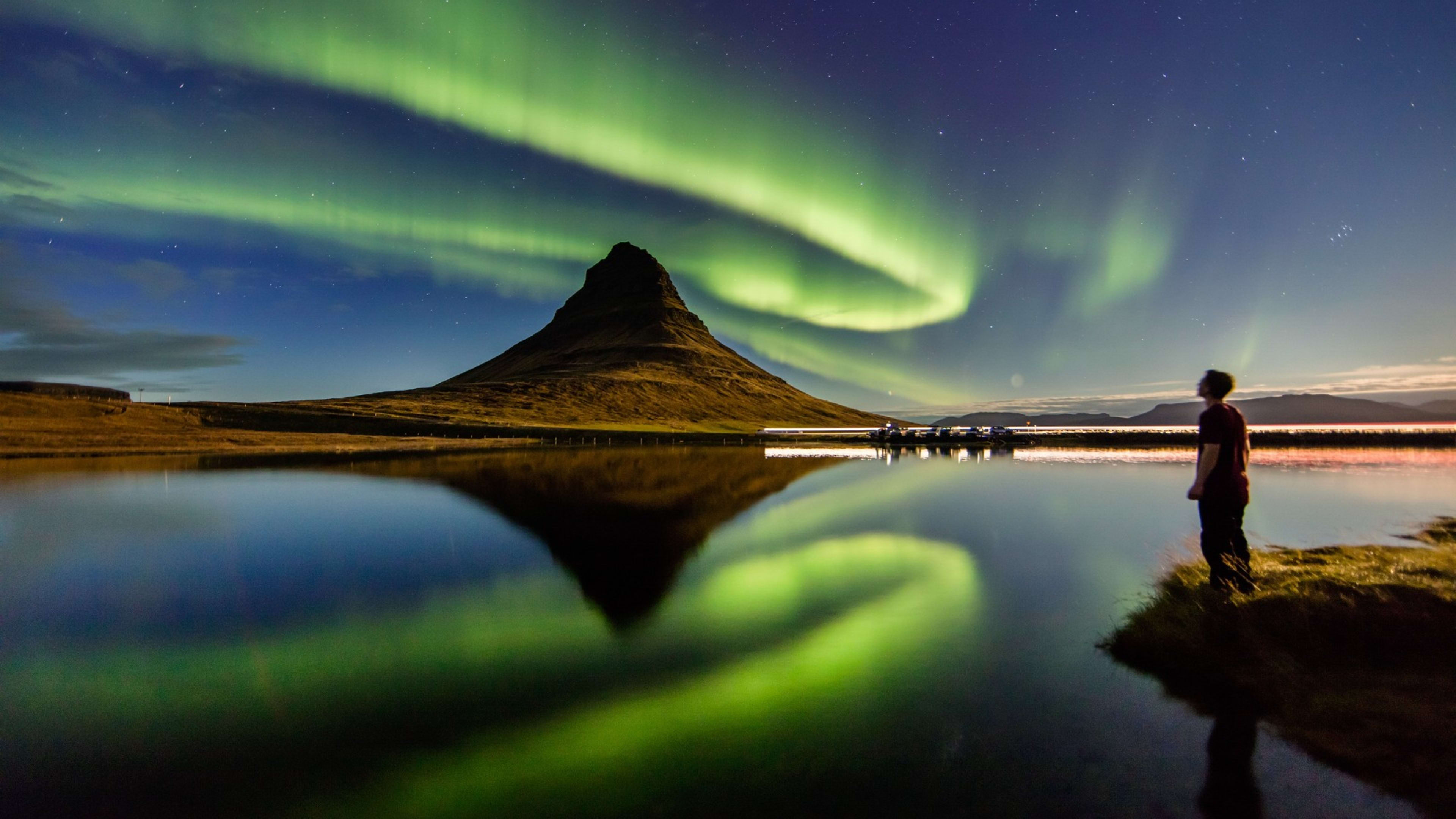
Good to know: It’s worth bearing in mind that the Northern Lights are a natural phenomenon. This means that while autumn and winter are great times of year to spot them, sightings can’t be guaranteed.
- Hunt down the Aurora Borealis on an Iceland Northern Lights tour.
- Related: Best time to see the Northern Lights in Iceland.
Why visit Iceland in the fall?
The Northern Lights are one of the main reasons to head to Iceland in the fall. But they aren’t the only draw. In fact, there’s lots more to enjoy while you’re here. For example, you'll get to experience summer activities in September and get a taste of winter throughout October and November.
Read on to discover 4 more reasons you’ll want to explore Iceland in autumn.
1. Go to a local festival
No matter what time of year you visit Iceland, you’ll find plenty of cultural events to keep you entertained. But with an offering that includes much-loved music festivals and ancient traditions, fall doesn’t disappoint.
Travel in September and you could take part in one of Iceland’s oldest cultural traditions. This is the Réttir, an annual rounding up of sheep and horses that roam freely throughout the summer.
Although this might not be your typical kind of festival, you’ll be surprised at how much fun it can be! Once the sole duty of farmers, the Réttir now involves thousands of locals and visitors. Join in by walking across the landscape, with guidance from locals, helping to move animals into their pens as you go.

In September, the capital city also comes alive with the Reykjavík Jazz Festival. But that’s not all! If cinema is more your thing, check out Reykjavík’s International Film Festival in October. Taking place over 11 days, the film festival celebrates the work of emerging directors, whose movies you can watch across the city.
Meanwhile, if you’re traveling to Iceland in November, don’t miss Iceland Airwaves. One of the country’s biggest music festivals, it brings local and international acts to venues across Reykjavík.
- Learn about Icelandic events throughout the year in this travel guide.
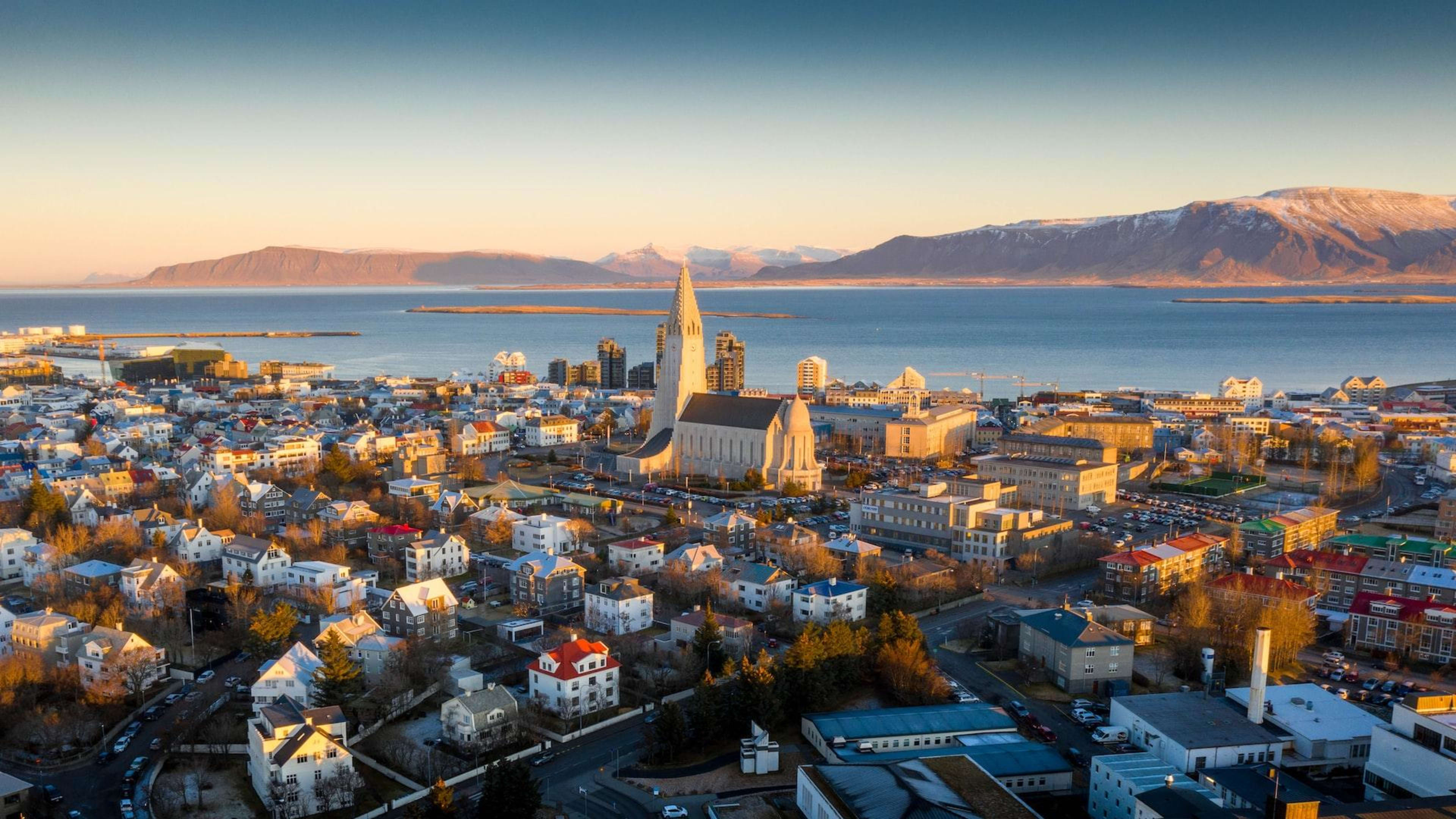
2. See Iceland’s fall colors
As temperatures drop and the air turns crisp, Iceland puts on its autumn coat. The trees and grass turn from green to fiery golds and reds, as the first snows dust the hilltops. You’ll probably agree with the many locals who say it’s one of the most beautiful seasons in Iceland.
Head into the countryside to see this colorful display for yourself. Skaftafell is one of Iceland’s most stunning wilderness areas year-round, but at this time of year, it becomes a rich tapestry of orange and red. What are you waiting for? Lace up your hiking boots and get ready to hit the trail.
Alternatively, you could visit some of Iceland’s breathtaking waterfalls – such as Skógafoss or Seljalandsfoss – to see these mighty torrents surrounded by fall colors. Or there’s Hraunfossar waterfall in West Iceland, which looks even better when it’s framed by golden trees.
- Explore the outdoors on an adventure tour of Iceland.

3. Witness Iceland’s wildlife before winter
Iceland is a paradise for nature-lovers no matter the season. But if you want to glimpse some of the country’s diverse wildlife, autumn is an excellent time to visit.
Whales are one of the headline acts. These gentle giants come to Iceland throughout the summer months to feast on fish, krill, and other seafood. If you’re lucky, you could spot as many as 12 different species before they venture south later in the fall.
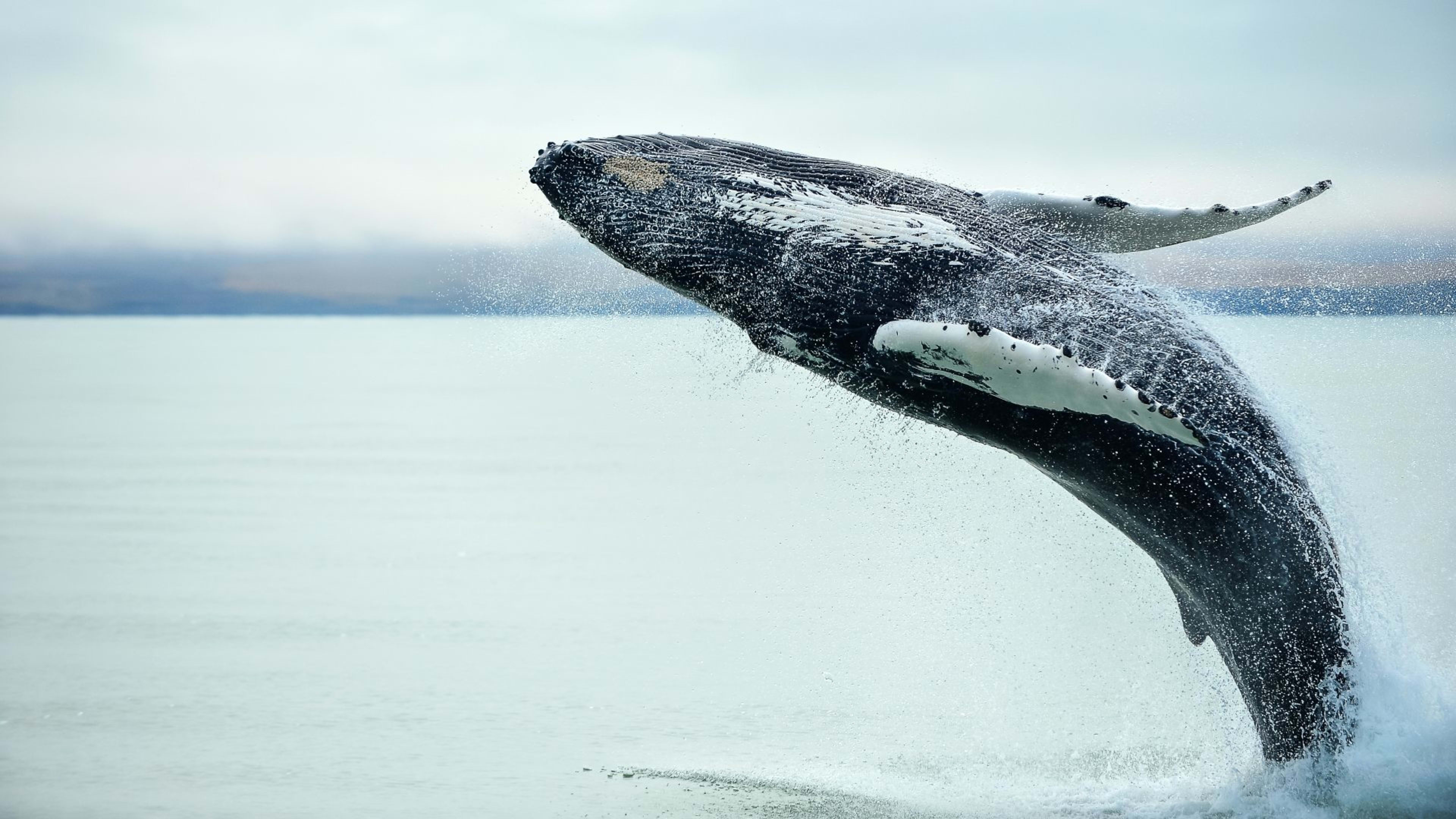
When you’re exploring Iceland, you’ll also want to keep an eye out for Arctic foxes. In autumn, they’re out and about building up their fat stores as insulation for winter. This is also the time of year when their fuzzy coats change from brown to white. While they’re elusive, spotting one is an experience you’ll never forget.
Iceland is also one of the best places in Europe to spot puffins. That said, by September, most are preparing to leave and spend the winter at sea. You never know though, you might get lucky and glimpse a few. If you want to maximize your chances of seeing puffins in Iceland, summer is the best time to visit.
4. Enjoy the wonders of Iceland with fewer visitors
Along with spring, fall is a shoulder season in Iceland, which means there aren’t as many visitors around. While the countryside doesn’t get exactly busy throughout the rest of the year, in autumn you’ll have many of the sights to yourself.
For example, head to Jökulsárlón glacier lagoon, one of the most popular destinations on the south coast, and there might not be anyone else about. Quiet shores can make the sight of its crystal-like icebergs even more impressive.
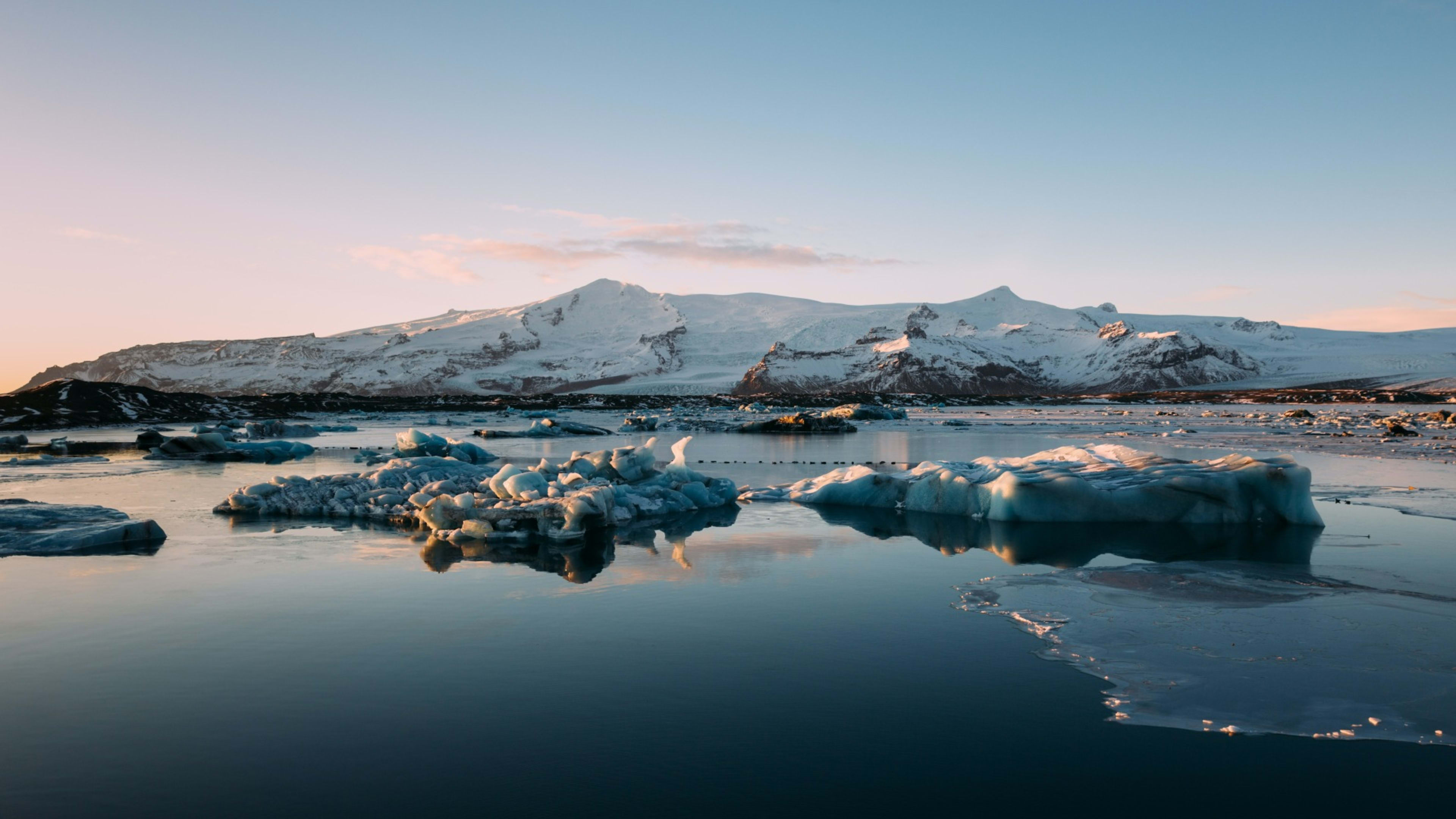
Fall is also a great time to check out Iceland’s spas and hot springs. With fewer visitors than in summer, you can expect a more tranquil experience. Plus, visit at night and you could see the Northern Lights dancing above you as you soak in warm geothermal water.
- Discover the Land of Fire and Ice on a Ring Road tour.
- Related: Iceland hot springs and geothermal pools – Your guide.
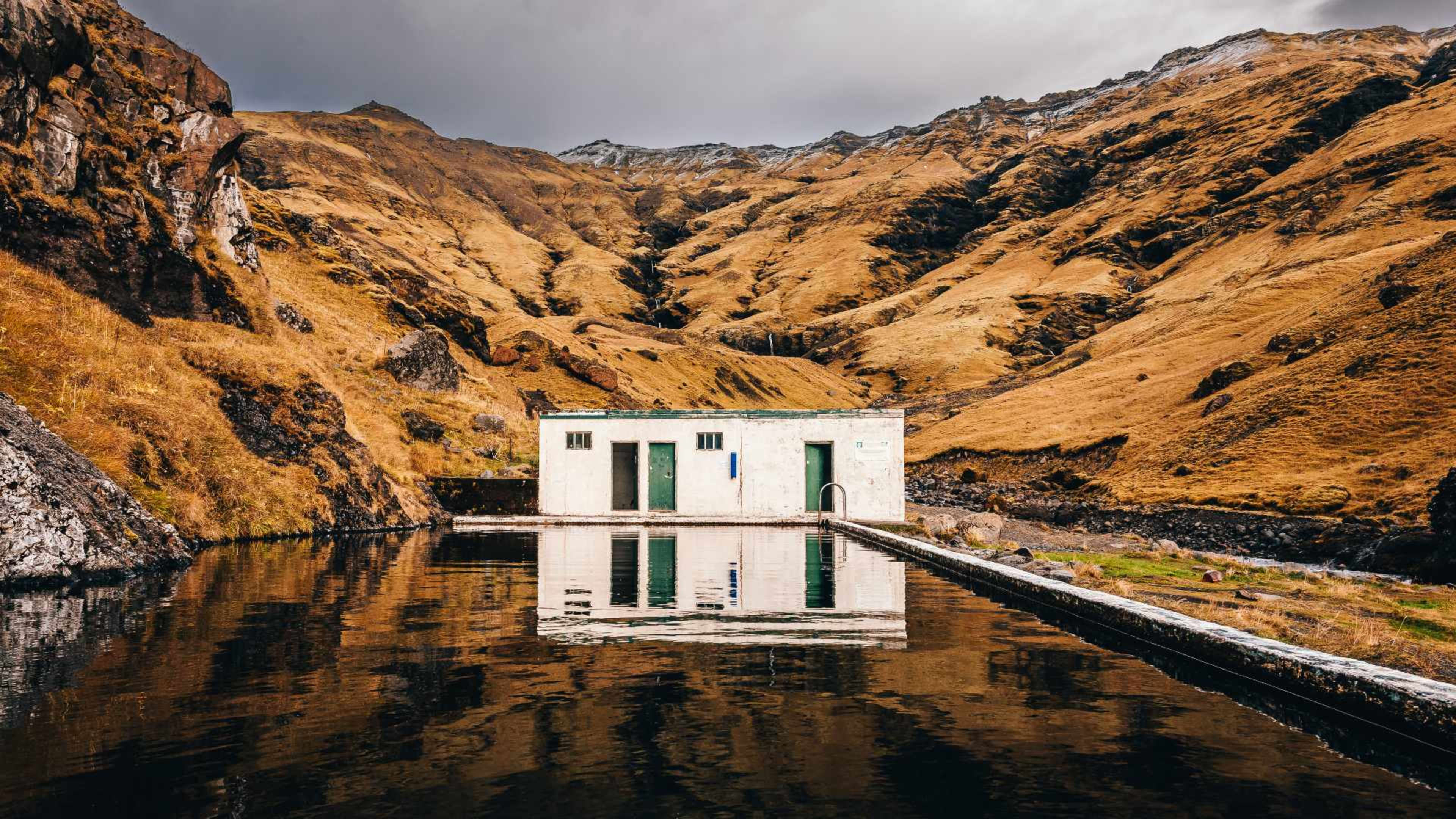
Visit Iceland in fall with Iceland Tours
With less people around and fiery autumnal colors blanketing the countryside, why not choose fall for your trip to Iceland?
Book with Iceland Tours and our travel experts will organize an authentic travel experience for you. We’ll take care of booking your places to stay and local transport, along with any excursions.
If you’d like the freedom to go at your own pace, then a self-drive tour of Iceland could be the best option for you. Or if you want to see the Land of Fire and Ice with a local guide and like-minded travelers, check out these Iceland group trips.
Alternatively, go for a multi-day package from Reykjavík. This way, you’ll be based in the capital city while enjoying day trips into the surrounding countryside to marvel at Iceland’s natural wonders.
Plus, you can customize your tour package with added nights or extra activities, such as spa days or glacier hikes.
No matter what time of year you choose to visit Iceland, we’ll make sure your trip is seamless. Secure your booking with just a 5% deposit.


